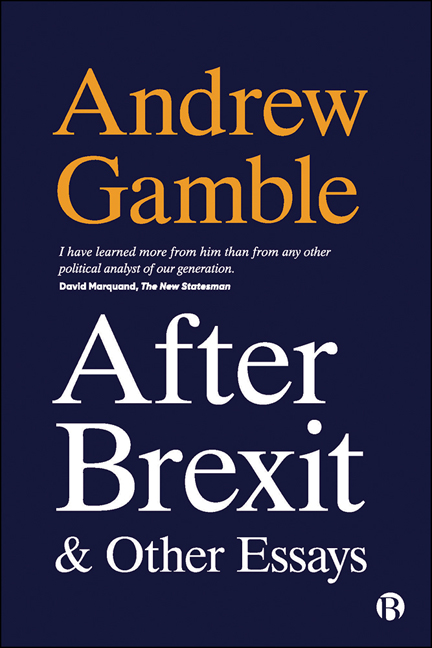Book contents
- Frontmatter
- Dedication
- Contents
- Preface
- Introduction: Historical Contexts
- Notes on the Essays
- 1 After Brexit (2019)
- 2 Explanations of British Decline (1999)
- 3 The European Disunion (2006)
- 4 The Anglo–American World View (2019)
- 5 The Free Economy and the Strong State (1979)
- 6 Thatcherism and Conservative Politics (1983)
- 7 Economic Growth and Political Dilemmas (1983)
- 8 The Crisis of Conservatism (1995)
- 9 The Thatcher Myth (2015)
- 10 Theories of British Politics (1990)
- 11 The Constitutional Revolution in the United Kingdom (2006)
- 12 What’s British about British Politics? (2016)
- Epilogue: Last Thoughts
- Notes
- Acknowledgements
- Index
3 - The European Disunion (2006)
Published online by Cambridge University Press: 22 December 2021
- Frontmatter
- Dedication
- Contents
- Preface
- Introduction: Historical Contexts
- Notes on the Essays
- 1 After Brexit (2019)
- 2 Explanations of British Decline (1999)
- 3 The European Disunion (2006)
- 4 The Anglo–American World View (2019)
- 5 The Free Economy and the Strong State (1979)
- 6 Thatcherism and Conservative Politics (1983)
- 7 Economic Growth and Political Dilemmas (1983)
- 8 The Crisis of Conservatism (1995)
- 9 The Thatcher Myth (2015)
- 10 Theories of British Politics (1990)
- 11 The Constitutional Revolution in the United Kingdom (2006)
- 12 What’s British about British Politics? (2016)
- Epilogue: Last Thoughts
- Notes
- Acknowledgements
- Index
Summary
In the spring of 2005 the EU constitutional treaty, which had been approved and signed by all states on 29 October 2004, was ratified by Spain and later by Luxembourg following successful referendums, and by nine other member states after votes in their Parliaments. But these successes were far outweighed by its rejection in referendums in two of the founder members of the Union, the Netherlands and France. Once France and the Netherlands had confirmed that they would not seek a further referendum to overturn the no-vote, several other countries, including Britain, then declared that they would not proceed with their own ratification process, despite some pressure to do so. Since ratification had to be unanimous, a decision against by just one state meant that the treaty could not come into force, even if the remaining states had all successfully ratified it. Of the twelve countries that suspended ratification, six were pledged to hold a referendum, and six a vote in Parliament.
The rejection of the constitutional treaty was an important moment in the debate on the EU in Britain. It confirmed the shift within British public opinion and the British political class, including the Labour Government, to a more Euro-sceptic position. A vote on Britain joining the euro had already been postponed indefinitely, and Tony Blair's decision to join the invasion of Iraq had split Britain from France and Germany and majority European opinion, by reaffirming the traditional British priority for the United States over Europe. The ‘no’ campaign was disappointed that the British were not to be allowed to vote on the treaty, since polls were indicating that it would have been decisively rejected. The Government did not try to hide its relief. Attention shifted to the budget and the question of Britain's rebate in the light of the enlargement of the EU to twentyfive members. The Government declared that it would only accept a reduction in the British rebate in return for a substantial reform of the Common Agricultural Policy, which was immediately ruled out by France and Germany.
- Type
- Chapter
- Information
- After Brexit and Other Essays , pp. 57 - 74Publisher: Bristol University PressPrint publication year: 2021



